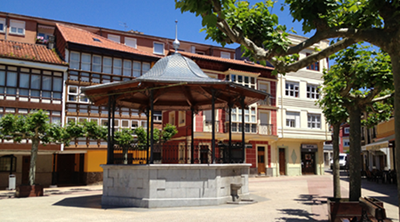Ampuero is known as the capital of the lower side of the River Asón, a river declared as Site of Community Importance (SCI). In addition, the Asón is a renowned trout and salmon river. This river and its tributary, el Vallino, in its natural environment, makes this municipality an ideal place to practice activities in contact with nature such as fishing, canoeing and hiking. Ampuero presents a singular urban look thanks to its strings of balconies and glazed galleries, which which blend in with other nineteenth-century buildings clearly constructed by returning emigrants from South-America.
A bit of History
The documented history of this municipality starts in the Middle Ages, in which quotes providing the existence of a strong Christian settlement in the XI century are found. At the end of the XV century, when the Catholic Kings repared the old road of Castilla, Ampuero felt a strong economic push .This new road joined, through the Los Tornos pass, the city of Burgos with the town of Laredo. The new route made Ampuero a stop-by place, something that favoured the trade flows in the village.
It is worth mentioning the importance of the iron industry in the XVIII, when Juan de Isla established an anchor factory for the Armada vessels.
Ampuero consolidated the Village category in 1731, during the reign of Felipe V.
By then, the town had a solid metal artisan tradition, blacksmiths, smelters and locksmiths, heirs of the medieval forgers. These coexisted with the agrarian activities and the flour mills.
In the Modern Ages, in 1605, Marrón becomes an apparition site when the virgin of Nuestra Señora de la Bien Aparecida appears in the ruins of a Shrine as an image of a wooden virgin. The story of devotion to Mary dates back to the beguining of the XVII century, when in September 1605, the Virgin appeared in front of young shepherds. This festivity is celebrated every 15th of September.





